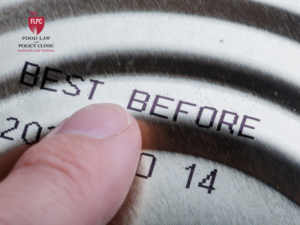Originally published by Women’s Health on April 22, 2019. Written by
There’s nothing quite like the sweet success of a good weekend grocery haul. Just one look at your fully stocked fridge has you patting yourself on the back: a week of fresh and delish dishes comin’ right up. But on Monday that broccoli gets the boot from your fam. Tuesday, you work later than planned, leaving you too tired for that new pesto-chicken recipe. And Wednesday, impromptu dinner plans with friends easily wins over DIY dining. Sound familiar?
Americans throw out more than 400 pounds of food per person annually, according to the Natural Resources Defense Council (NRDC). But it’s not just about the neglected noshes. “When we toss food, we waste natural resources—energy, water, air, soil—all of which are required for production,” says Katherine Miller, vice president of impact at the James Beard Foundation. And, ugh, more cons: Leaving grub to rot in landfills produces the same amount of greenhouse gases as 37 million cars. Whoa. This can also wreak havoc on your wellness. Amped-up emissions make it harder to breathe by aggravating asthma. What’s more, rising temps (courtesy of global warming) can lead to stress, anxiety, and depression and increase your risk for cardiovascular issues such as stroke.
The good news? There are ways to prevent climate change. The even better news? Reducing your food-waste output is an easy place to start, says Miller. It’s totally doable on any diet from allergen-free to keto. So, master these strategies to go green while still eating your greens. PSA: Mother Earth—and your health—will thank you.
1. Focus on Storage
Of course you don’t mean to toss all that food, but truth is, the majority of food waste happens in homes (not restaurants). Here’s step one: Figure out how much you’re wasting.
“For one to two weeks, put all the food you’d typically discard into a bin in your fridge or on your counter. Then take stock of what you’ve collected to start making better decisions,” says Emily Broad Leib, director of the Harvard Law School Food Law and Policy Clinic.
Next: Create “eat me first” areas for edibles that need to be used quickly, like berries or dairy products—no shame in labeling as a reminder!—and practice reorganizing your fridge post-shop. As you unpack your bags, move older goods to the front so you grab ’em before recent buys. This will also make it easier to “shop your fridge” later—i.e., see what you still have before heading to the market, says scientist Dana Gunders, formerly of the NRDC and author of Waste-Free Kitchen Handbook.
Read the rest of “6 Genius Ways to Stop Wasting Food On Earth Day 2019” at Women’s Health.

Health Law & Policy, Commentary
Cuts to the Federal Workforce and Medicaid: What’s Happening and What Can Advocates Do? – Health Care in Motion
March 12, 2025